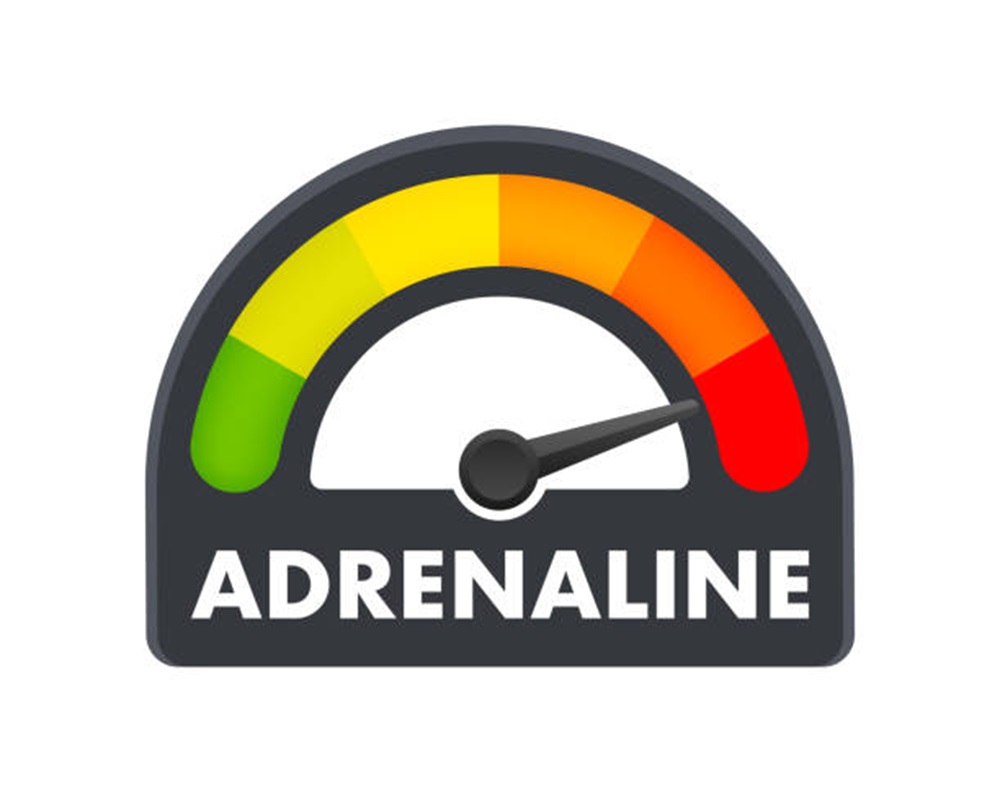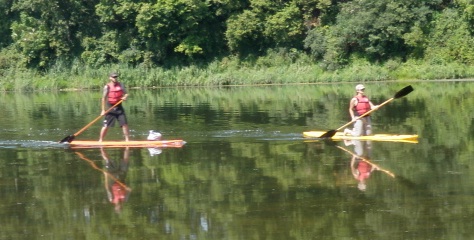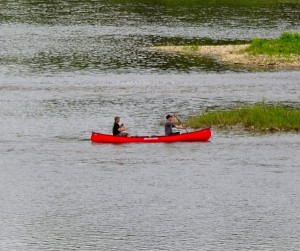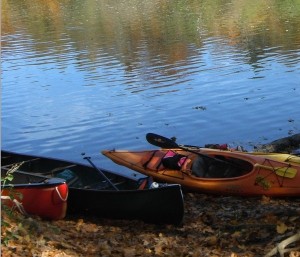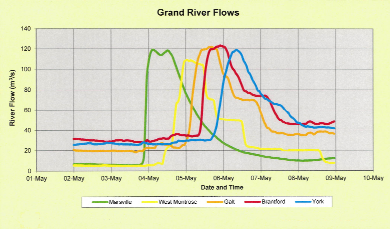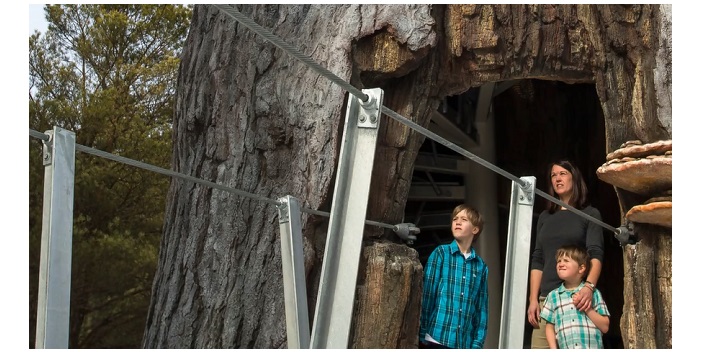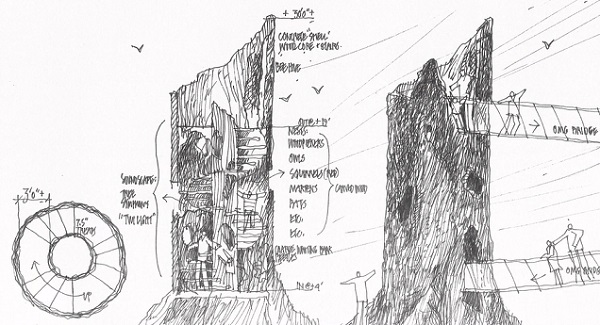With over 40% of travellers looking for heart-pounding thrills in 2024, the global adventure tourism market is predicted to grow to a staggering 2,824 billion usd dollars/ 3,840 billion cad dollars at time of publishing by 2030, as more seek adrenaline-fuelled experiences.
So if you are a relentless adventure junkie, which countries should be on your radar this year?
Our friends at BestCasinoSites.net evaluated factors including the number of roller coasters, casinos, rock climbing opportunities, mountain bike routes, hiking trails, and off-road trails in 61 countries, to compile a global index ranking the best countries to visit for thrill-seekers.
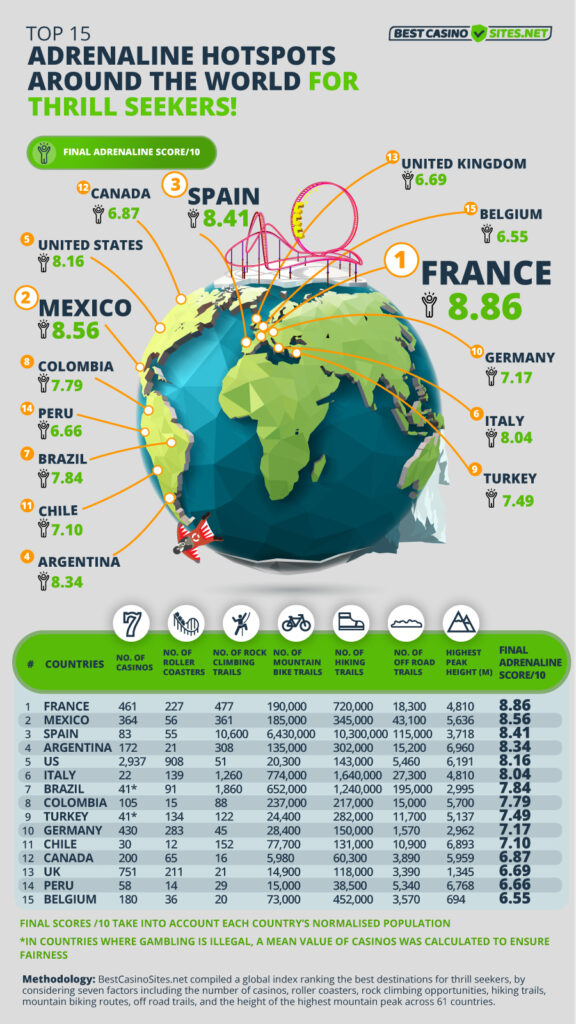
Canada among top 15 countries for adventure lovers
From biking the Gulf Islands to ziplining over Niagara Falls, Canada ranks 12th best country to get that adrenaline fix, earning a notable final score of 6.87/10. With 60,300 hiking trails and 5,980 mountain biking routes, Canada boasts a geographically diverse landscape and is home to North America’s second-highest peak, Mount Logan, topping out at 5,959 meters.

Mount Logan is a whopping 6KM in elevation and ranks sixth in the world for most prominent peak.
Adrenaline checklist in Canada: Experience Niagara Falls on a zipline, Rock or ice climb in the Rocky Mountains, Jump over the Cheakamus River with Whistler Bungee.

Whistler Bungee: offering a 160 foot jump over the glacially fed River below.
France reigns as the adventure capital of the world
According to the study, France is the world’s adventure capital, boasting an overall adrenaline score of 8.86/10. Prized for its stunning mountain ranges from the Pyrenees, Alps to Chamonix, the country offers over 720,000 hiking trails. Test your limits by conquering Europe’s highest peak, the Mont Blanc ranges, towering at 4,810 metres, or by jumping on one of France’s 227 thrilling roller coaster rides!
Adrenaline checklist in France: Cliff Jumping from the Calanques, Rock climbing overhanging limestone in Provence, Cycling on a glacier.
Trailing behind in second is Mexico, achieving a final score of 8.56/10. Your journey to this Latin American gem can be incredibly action-packed as you scale Mexico’s iconic snow-capped cone, Pico de Orizaba, with a peak of 5,636 metres above sea level; tackle one of the world’s biggest sport climbing areas at El Potrero Chico; or indulge in the thrill of games at any of the 364 casinos* Mexico boasts.
Adrenaline checklist in Mexico: Extreme urban downhill biking in Taxco; Bungee jumping at Los Cabos, Zip-lining in the Jungles of Yucatan.
The land of paella and sangria ranks as the third must-visit destination for adventurous souls, scoring 8.41/10. Spain offers an enticing array of outdoorsy pursuits, boasting the highest number of thrill-seeking trails – from rock climbing (10,600), mountain biking (6,430,000), to hiking (10,300,000) – among all cities studied. Spain’s pristine landscape appears tailor-made for adventure enthusiasts.
Adrenaline checklist in Spain: Rock climbing In Picos De Europa; Canyoning at Junta de los Rios; Andalucía, Walking the El Caminito del Rey.
Argentina takes fourth place, earning an impressive final score of 8.34/10. Home to the third highest peak (6,960 metres) in the study, The Aconcagua attracts over 3,000 mountaineers annually, despite being nicknamed the ‘Mountain of Death’. With a whopping 172 casinos*, including South America’s largest casino complex, the Trilenium, Argentina offers ample opportunities for both seasoned risk-takers and casual players alike.
Adrenaline checklist in Argentina: Mountain biking in Bariloche; Ice trek on top of Perito Moreno Glacier, Paragliding with Condors in Córdoba.
From kayaking down the Grand Canyon to cliff camping in Colorado, the United States rounds off the top five adrenaline hotspots, earning an impressive final score of 8.16/10. With the highest density of casinos in the study totalling 2,937 across the country, and over 900 roller coasters – including the world’s second-fastest roller coaster, Kingda Ka – America is a must-visit if you crave the rush of adrenaline.
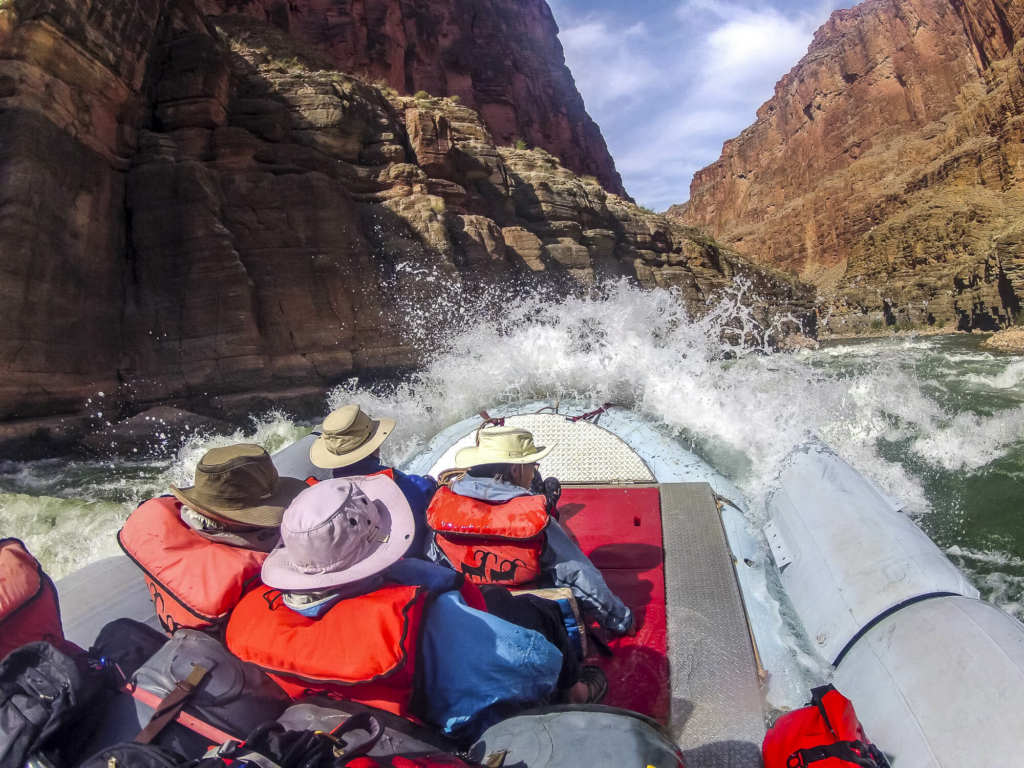
Adrenaline checklist in the US: Rafting in the Grand Canyon, Mountain biking the Grand Staircase in Utah, Rock Climbing in Yosemite National Park.
For the Silo, Alasdair Lindsay.
Methodology
- The experts at BestCasinoSites.net compiled a global index ranking the best countries for thrill-seekers by considering seven factors, including: (i) Number of casinos (ii) Number of roller coasters (iii) Number of rock climbing trails (iv) Number of mountain bike trails (v) Number of hiking trails (vi) Number of off road trails and (vii) Highest peak height in each country.
Note: Countries with more than two missing values were omitted, resulting in 61 countries in the final dataset.
- The experts collected the data from the below sources:
(i) Number of casinos: https://www.casinocity.com/casinos/
Note: In countries where gambling is illegal, the average number of casinos of all countries was taken (excluding US because of being a huge outlier) to ensure fairness and avoid penalising any specific country.
(ii) Number of roller coasters: https://rcdb.com/location.htm
(iii) Number of rock climbing trails: https://www.wikiloc.com/trails
(iv) Number of mountain bike trails: https://www.wikiloc.com/trails
(v) Number of hiking trails: https://www.wikiloc.com/trails
(vi) Number of off road trails: https://www.wikiloc.com/trails
(vii) Highest peak height in each country: https://flagpedia.net/lists/highest-point
Note: The number of rock climbing, mountain bike, hiking and off road trails were sourced from user-posted data
- After collecting the numbers, the experts logarithmically normalised the figures in order to reduce skewness between countries with different sizes.
- A final adrenaline score out of 10 was calculated for each country to reveal the top 15 adrenaline hotspots across the globe.
- All data was collected on 5th February 2024 and is correct as of then.
*It’s crucial to thoroughly review the rules and regulations governing gambling in various countries before engaging in any gambling activities.
